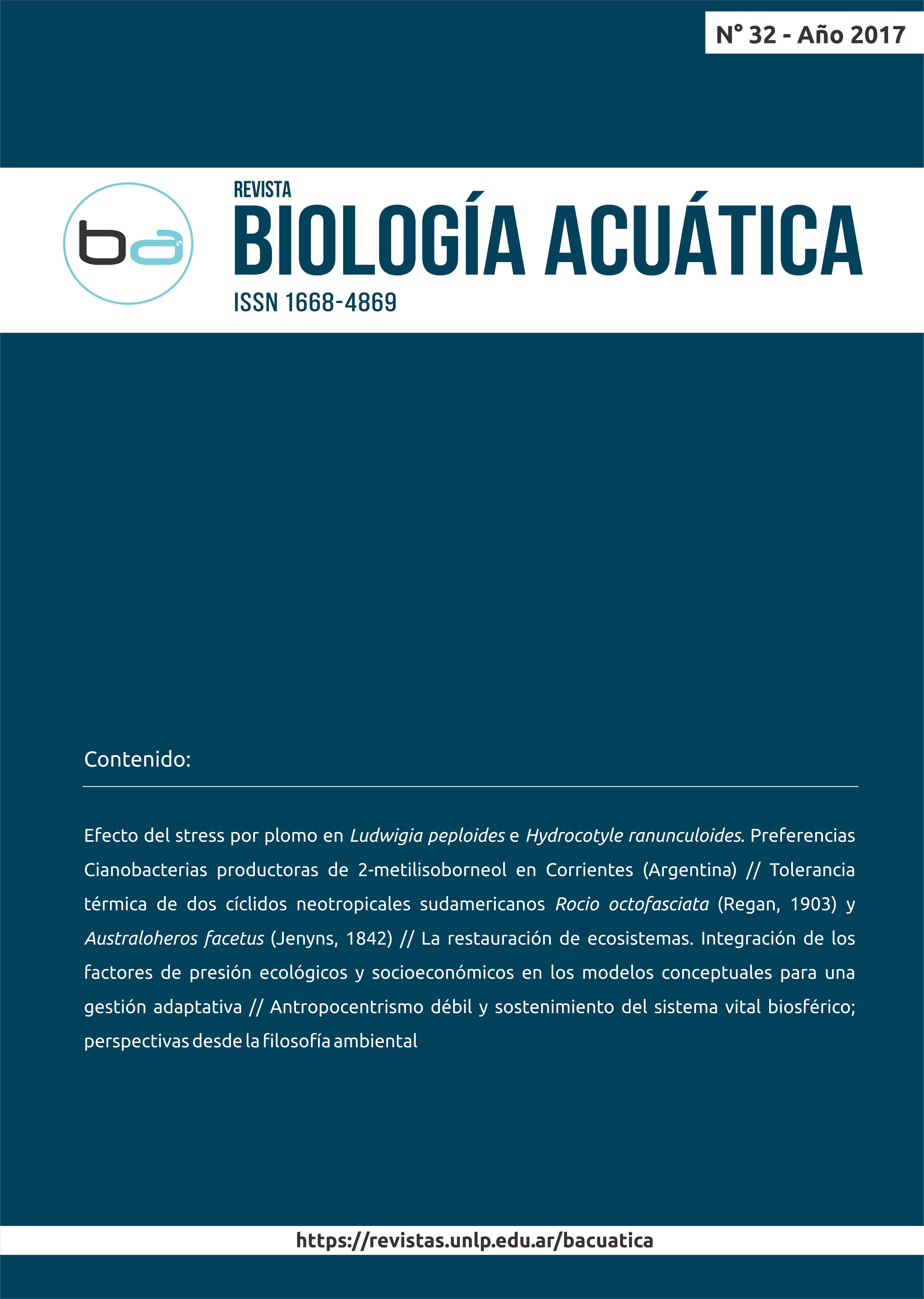Efecto del stress por plomo en Ludwigia peploides e Hydrocotyle ranunculoides
Keywords:
phytoremediation, aquatic plants, lead, morphological alterations, aquatic plantsAbstract
Wetlands usually provide a natural mechanism to diminish the transport of toxic compounds to other compartments of the ecosystem by immobilizing heavy metals and storing them below ground in roots and/or soil. The aim of this study is to evaluate the Pb uptake and translocation into two aquatic plants - Ludwigia peploides (Kunth) P.H. Ravenand and Hydrocotyle ranunculoides L.f. - and to quantify potential histological changes by metal action. For this, an assay in greenhouse was carried out in summer (November to April). Lead, as Pb(NO3)2, was added to the sediments attaining concentrations of 300 μg Pb/g sediment (T300) and 900 μg Pb/g sediment (T900). These treatments were tested against controls without Pb addition and KNO3 addition for quantifying nitrate effect (C300 and C900). The concentration of Pb was determined at root, stem, leaf, water and at different sediment fractions. Histological sections were prepared to determine morphometric parameters. More than 80% of Pb was associated with little mobile sediment fraction (organic matter-sulfide and oxides of Fe and Mn). Both species, H. ranunculoides and L. peploides, showed a significant increase in root Pb concentration at treatment with Pb addition (p<0.01). Lead concentration of stem and leaf of H. ranunculoides increased at T300 treatments (p<0.05 and p<0.01, respectively) and T900 (p<0.01) with respect to control treatments. An increase of Pb concentration in stem and leaf of L. peploides was only observed at T900 (p<0.01). In polluted sediments, inner cortex cells of H. ranunculoides root showed less height (p<0.01) and width (p<0.01), and a decrease in porosity (p<0.05) with loss of parenchymatous tissue was observed. The measured parameters of L. peploides were similar to control. Since reducing environments favour Pb immobilization, the decrease of parenchymatous tissue in H. ranunculoides could contribute to its retention in the rhizosphere. The absence of morphological alterations in L. peploides suggests that the studied phenotype could be tolerant to the assay conditions.





















